Building Study
approx 8 x 10 - done from my photo reference
on 140 lb watercolour paper - various watercolour brands with some watercolour pencils
This
blog post is the second in a series of watercolour experiments. I'm
playing with different ways to keep watercolour papers flat while
working on watercolour pours. Last time I did “Soak and
Slap”.....this time I'm trying “Stretch and Staple”. This
method for prepping watercolour papers is a traditional one that I
thought I “didn't have time for”. But after some disappointing
mishaps with watercolour boards.....I've decided to try the technique
out.
The
first thing is to soak your watercolour paper in water for five to
ten minutes. Pull it out of the water and briefly drain. Lay it on
some masonite/particle board or other, and gently flatten it out.
Then take a stapler/staple gun and beginning at the center edge,
staple about every inch or so, gently stretching the paper flat.
Continue working out from the center edges flattening and stapling
the paper. When done let it dry. It should dry drum taut and flat.
I put in
some misket on spots I wanted to reserve in white, then throughly
spritzed the entire sheet. I then began pouring on a yellow, a rose
madder genuine and a blend of different blues. As you can see it
buckled a lot!
Looking
at the buckles and the valleys where the watercolour was pooling I
despaired of a smooth blending of colours. BUT I remembered another
component of the “pour” technique......MOVING the watercolour
around on the paper and finally pouring the excess watercolour off
the paper. So I proceeded to do just that, I tilted and turned the
board till I had gotten a good wash and then poured the rest off into
a cup. Almost immediately the buckles began to subside. As the
paper began to dry just a bit......it also began to flatten back out.
By the
time it was dry it was once again totally flat, and the wash I'd done
was pretty even!
I wanted
slightly stronger colours.....remembering that watercolours always
dry lighter than when wet. So I did a coupla of more washes,
repeating the pouring method, with the same results.....a flat sheet
when dry.
Once the
washes were dry I removed the misket. It was skewing my eye when
evaluating the wash placements. I went on to line in with
watercolour pencils more of the details of the building and the tree
branches. I was not as pleased with the stark outline of the misket
on the leaves and scrubbed out some of the more harsh lines. The
misket had also not stayed straight on building highlights that
really needed to be straight. But all in all this study has been a
ball to do. I've gained valuable know how about basic watercolour
painting and very much enjoyed bringing a bit-o-colour to a sometime
plain brick building.

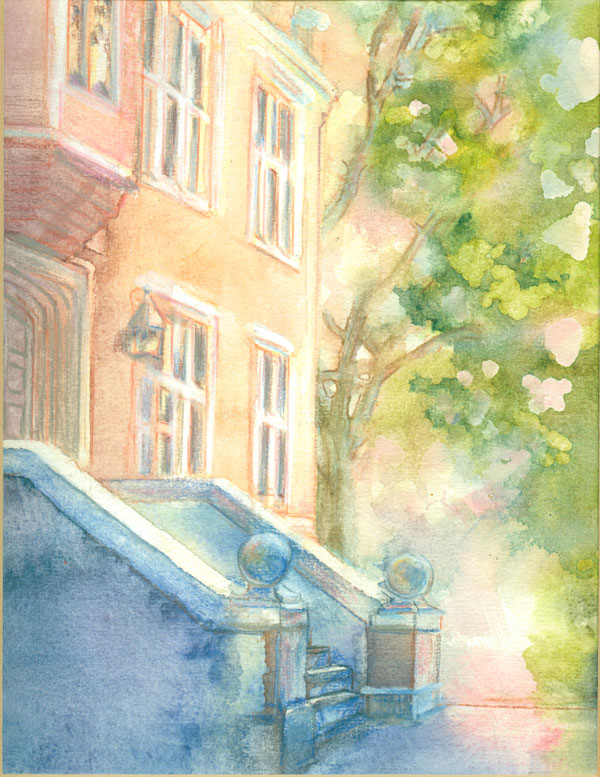
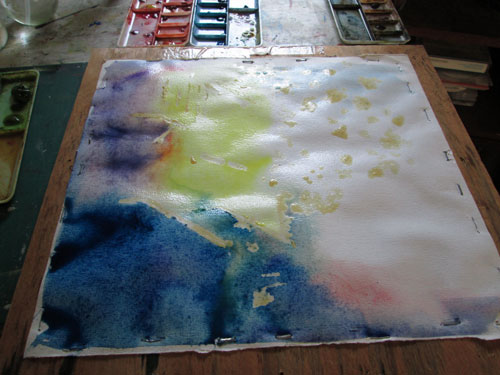
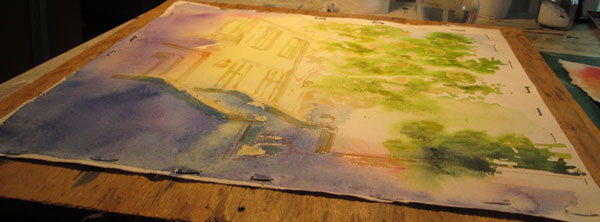
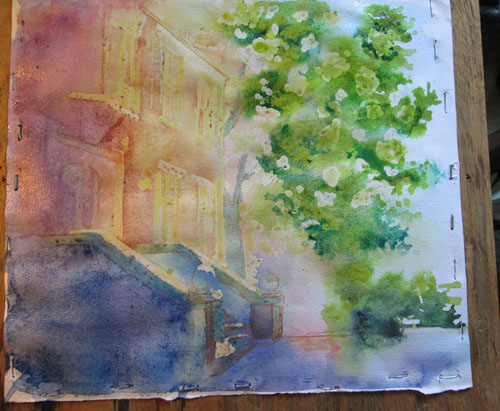
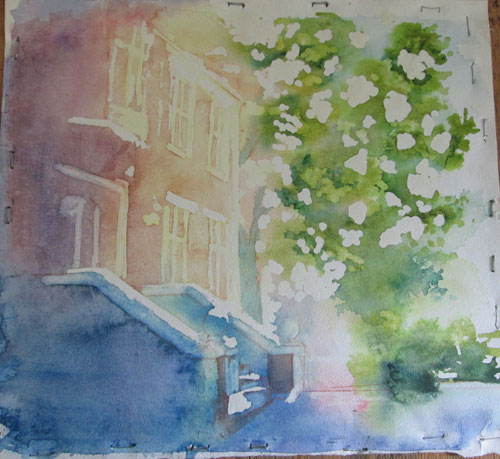
No comments:
Post a Comment